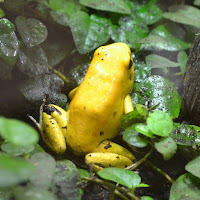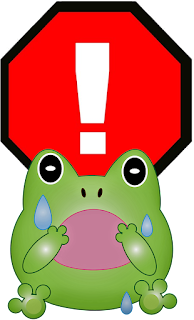Updated September 1, 2021
Dear Readers,
We really hoped we wouldn’t ever need to do another announcement like this, but the same issues that plagued us before the Spring Equinox have revisited us just before the Autumn Equinox: climate and weather events, ongoing drought in our area, ongoing economic fallout from the pandemic, unforeseen breakages and repair issues, and health problems that result from our advancing ages — all even more complicated by continued restrictions caused by the Covid pandemic, thanks to the rise of the Delta variant mutation.
So far, we are all more or less okay – any episode of the national news will show you a lot of people with far bigger problems than ours – but it takes an awful lot of time, effort, money, and contingency planning to stay that way. As a result, our publication schedule has once again taken a hit; and it may again, before everyone adjusts to the “new normal.”
So, once again we plan to start back up with a little celebration of the Equinox, and of Autumn celebrations, sometime in the next week or so. Enjoy, and stay tuned.
J.D., Annake’s Garden Gnome
Dear Readers,
We really hoped we wouldn’t ever need to do another announcement like this, but the same issues that plagued us before the Spring Equinox have revisited us just before the Autumn Equinox: climate and weather events, ongoing drought in our area, ongoing economic fallout from the pandemic, unforeseen breakages and repair issues, and health problems that result from our advancing ages — all even more complicated by continued restrictions caused by the Covid pandemic, thanks to the rise of the Delta variant mutation.
So far, we are all more or less okay – any episode of the national news will show you a lot of people with far bigger problems than ours – but it takes an awful lot of time, effort, money, and contingency planning to stay that way. As a result, our publication schedule has once again taken a hit; and it may again, before everyone adjusts to the “new normal.”
So, once again we plan to start back up with a little celebration of the Equinox, and of Autumn celebrations, sometime in the next week or so. Enjoy, and stay tuned.
J.D., Annake’s Garden Gnome
"Once Upon a Time...... (Isn't that the way all good stories begin?) a large fish with wide, bony fins was washed up on a narrow beach. Or perhaps it climbed out of the water to escape a larger fish that was trying to eat it. It could haul itself out of the water because its large fins had numerous hard, stiff bones. It had a lung, so it could breathe the thin air. (Fish much like it still live in our oceans as coelacanths and lungfish.) Perhaps it pulled itself further up the beach and looked around. There wasn't much to see — some shallow pools with blue-green algae in them. Perhaps some lichens on a rock. After a time it felt safe and returned to the water.
 |
| Australian Lungfish |
But during the next fifty million years or so fish of its kind, called lobed-finned fishes, hauled themselves out of the water and visited the beaches. Fins became feet, lungs expanded, eyesight improved, skin toughened. Some of the fish came to the beaches and never returned to the sea. They weren't fish any more. They were something new — amphibians. They conquered the world of the Devonian Period from about 419 to 357 million years ago.
 |
| Fossil of an early amphibian |
They introduced a new body form with front and hind legs, toes (some of which became fingers), bigger brains, better eyes — the list goes on and on. After new modifications, like eggs with shells, there were reptiles. With warm blood and arms which became wings, there were birds. Still more modifications produced mammals. So, if you meet a frog or toad, you might thank it for all the things amphibians did that shaped the world. But don't shake its hand. That might poison you.
 |
| Is this a frog or a toad? |
 |
| ...And this is the other one! |
Frogs have played a part in art and writing for centuries. Think of fairy tales like The Frog Prince by the Brothers Grimm. In ancient Egypt and Mesopotamia, they signaled fertility, because millions of them were born after the yearly flooding of the Nile river when crops could be planted and harvested. Heqet was the goddess of that fertility and was depicted with a frog's head. In Lower Egypt the god Hapi was dressed in papyrus plants and attended by frogs. Aesop wrote a fable about a frog that tried to blow itself up to the size of an ox. Aristophanes wrote a comic play called The Frogs. One of our most popular American stories is The Celebrated Jumping Frog of Calaveras County by Mark Twain.
 |
| Statue of Heqet |
The oldest known statue carved of a frog is dated at about 3,000 B.C. (BCE). Japanese painter Getsuju is known for a painting of a regal-looking, long-suffering frog putting up with the mischief of a mouse. The people of ancient Peru often showed frogs in their art. Josiah Wedgwood made a large set of china for Catherine the Great of Russia that featured a royal crest with a frog. Frogs appear on ads for various companies and products, both in print and on the air. And who doesn't love Kermit?
 |
| Marketing on a biscuit (cookie) tin |
Here are some fun things to do to celebrate frogs:
1) Play a word game — Give all the players paper and pencils. Have a dictionary handy to settle arguments. Have a time limit, but be generous: this game can go on for quite a while. Make a definite rule whether proper names may be used or not. The ideas is to write down as many words of four or more letters that contains the letters FROG in any order. Here are some samples: forge, forage, forget, forgery, refrigerator. Once the game has ended and any squabbles have been settled by the dictionary, give out simple prizes for longest list, longest word, most interesting list, most scholarly list, etc. Give duplicate prizes for ties. (As you may have noticed, the same game can be played with TOAD.)
2) Make frog hand puppets or stuffed bean bags.
 |
| Frog puppet by Annake |
3) "Feed the Frog a Fly" — This is a take-off on "Pin the Tail on the Donkey" and requires some preparation. You will need a bulletin board or the side of a large, sturdy cardboard box. Color and cut out a large frog to put on the bulletin board or draw it directly on the box. It can be realistic or cartoonish, but should be LARGE. If you are artistic (or have a large format printer), try something like the design below. Make a set of paper or poster board "flies" — one for each player. Number them or make each one a different color. Push a thumbtack through the center of each "fly". Blindfold each player and have them try to pin their "fly" to the frog's body. Duplicate prizes for all who succeed. Perhaps a special one for whoever gets closest to the frog"s "stomach"?
 |
| Image by OpenClipart-Vectors from Pixabay |
4) For the older set — devise some version of "Frog Golf", "Frog Basketball", "Frog Bowling", or "Frog Pool Polo". Let the kids work on the rules with you, but be safety conscious and have at least one "referee" with a loud whistle!
I became fascinated with some frogs of a very different kind when we lived in Panama. These are the poison arrow frogs, so-called because native peoples used their venom to fashion poisoned darts for hunting. They are small frogs that live in the tops of rainforest trees. Many have vivid colors which warn predators that they are not to be eaten. What fascinated me was the extreme lengths they go to to provide for and protect their youngsters. You can see several species of these frogs embroidered on my shirt.
In some species the eggs are laid in a damp spot on the ground. When the tadpoles hatch out, they wiggle onto their waiting father's back. The father caries them high into the trees, often making a climb that is more than 500 times the height of his body length. He often passes pools of rainwater that are close for more distant ones. Some fathers search to find areas under bromeliads, which release water that flows down the tree trunks into the pools. The tadpoles are left in pools far apart. This may keep them from later mating with their own brothers and sisters, or it may make sure they don't have to compete with each other for resources. In some cases the fathers take insects to their offspring and feed them.
In other poison species the mother lays only a few widely-spaced eggs at a time in pools formed by the leaves of native plants When the tadpoles hatch, she returns to each pool every few days and lays an unfertilized egg to feed the baby. She continues to do this for months until the little frogs are ready to leave their pools and start life on their own. In the meantime, Mom has slipped tiny doses of the poison used by their species into the eggs. By the time the young frogs leave their pools, they are fully protected.
Some species of true frogs grow to considerable size and are called bullfrogs. In areas of the country where there are no bullfrogs, their place is taken by another large species of frog. The hind limbs of many of these species are considered a delicacy and are eaten in France and other European countries. They are also eaten in the USA, especially in southern states. But, considering the disappearance of so many frog species, many environmentalists are working to curb this practice to conserve species. Because of their dependence on water for survival, frogs are among the first kinds of animals to disappear from climate changes. They are an Early Warning System to warn us of serious environmental problems.
We hope you have had a "hopping" good time with our froggy friends. Here are some links to recent articles about other fascinating frogs, including:
• The world’s largest frog (and again here);
• A see-through frog;
• A “zombie” frog;
• A frog that lives in desert sand dunes.
Enjoy!
 This post by Annake's Garden is licensed under a Creative Commons Attribution-NonCommercial-ShareAlike 3.0 Unported License.
This post by Annake's Garden is licensed under a Creative Commons Attribution-NonCommercial-ShareAlike 3.0 Unported License.








